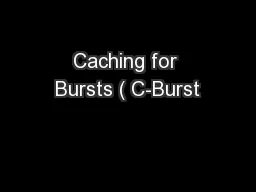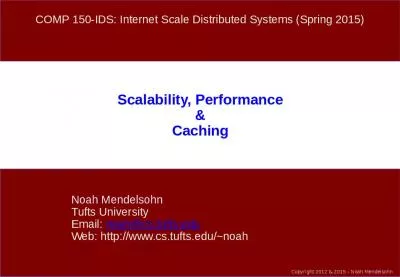PPT-Caching for Data Analysis
Author : marina-yarberry | Published Date : 2019-12-11
Caching for Data Analysis Ken Birman Theo Gkountouvas Data Analysis Data processing is growing very fast compared to the hardware acceleration Volume Complexity
Presentation Embed Code
Download Presentation
Download Presentation The PPT/PDF document "Caching for Data Analysis" is the property of its rightful owner. Permission is granted to download and print the materials on this website for personal, non-commercial use only, and to display it on your personal computer provided you do not modify the materials and that you retain all copyright notices contained in the materials. By downloading content from our website, you accept the terms of this agreement.
Caching for Data Analysis: Transcript
Download Rules Of Document
"Caching for Data Analysis"The content belongs to its owner. You may download and print it for personal use, without modification, and keep all copyright notices. By downloading, you agree to these terms.
Related Documents














